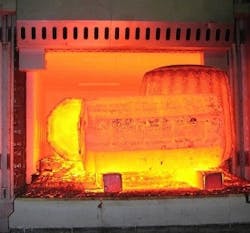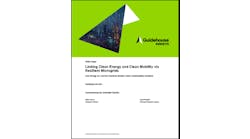Credit: ANDRITZ Maerz GmbH
Two leading U.S. energy efficiency organizations are not happy with a comprehensive Senate energy bill, saying that it unravels a stakeholder agreement on appliance standards for furnaces.
At issue is language in The Energy Policy Modernization Act of 2015, which its backers hope will be the first major energy bill passed by Congress since 2007. The bill this week was reported out of the Senate Energy and Natural Resources Committee in an 18 to 4 vote.
Sponsored by Sen. Lisa Murkowski, a Republican from Alaska, who heads the Senate Energy and Natural Resources Committee, and Sen. Maria Cantwell, a Democrat, the bill pushes a range of technologies to upgrade the US energy system, such as microgrids, energy storage and energy efficiency, as well as efforts to improve cybersecurity.
However, the American Council for an Energy Efficient Economy (ACEEE) and the Alliance to Save Energy (ASE) say that the bill also would set the bad precedent of legislatively overriding agreements to finalize energy efficiency appliance standards.
Not only would the Murkowski bill delay the furnace standard, but it also would set up an alternative standards process that is likely to be contentious, according to ACEEE.
“We have a rich and long history of establishing cost-effective appliance and equipment standards in the U.S. through a stakeholder engagement process,” said Kateri Callahan, ASE president. “By ignoring consensus agreements that have been reached by manufacturers and stakeholders on the furnace issue, Sec. 1103 throws into jeopardy this ‘tried and true’ process for delivering huge energy and dollar savings to our economy.”
ASE cited a report by the Appliance Standards Awareness Project that says $1 trillion in energy savings will accrue to U.S. consumers and businesses by 2035 from various appliance standards put in place by 2012. Furnace standards, however, have not changed since 1987.
Steven Nadel, ACEEE executive director, said the Murkowski bill has several useful provisions for smart manufacturing and smart buildings, but that his organization cannot support it because of the “poison pill” created by the furnace provision.
“For several decades, Congress has only advanced energy efficiency provisions that have broad support and avoided fanning controversy. Unfortunately, the ‘Energy Policy Modernization Act’ violates this principle. We hope that comity will prevail and this provision will be changed on the Senate floor,” Nadel said.
Both organizations support another bill, the Energy Efficiency and Industrial Competitiveness Act, also reported this week out of Senate Energy and Natural Resources Committee.
Sponsored by Sen. Rob Portman, a Republican from Ohio, and Jeanne Shaheen, a Democrat from New Hampshire, the bill pushes a range of energy efficiency programs, including building codes and mortgage underwriting that considers energy efficiency installations in a home.
Versions of the Shaheen-Portman bill have been moving in Congress for several years.
ASE called for Congress to strip the Murkowki bill of the furnance provision and add the key energy efficiency provisions from Shaheen-Portman that the Murkowski bill lacks.
Track progress of key energy efficiency bills by subscribing to the Energy Efficiency Markets newsletter. It’s free.






